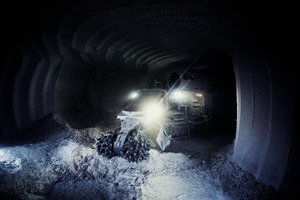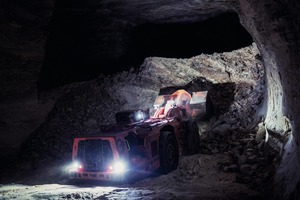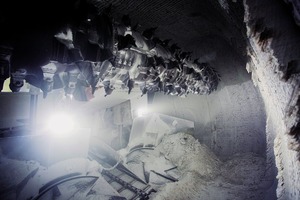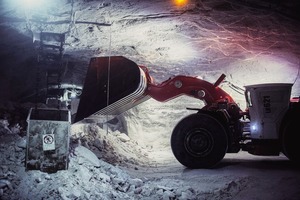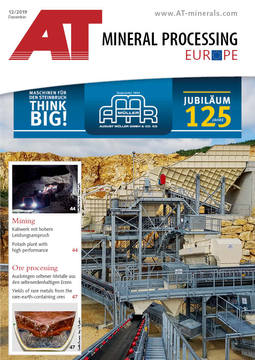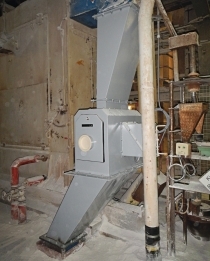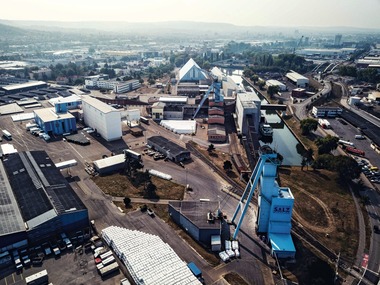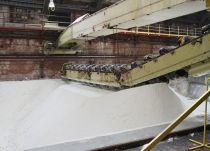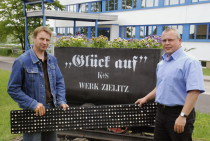Potash plant with high performance
The operation is one of Germany’s largest and most modern potash mines, occupying an area underground similar to that of the city of Magdeburg. But it’s also actually Germany’s youngest potash plant, having commenced production in 1973. Due to its thickness and high potassium chloride content, the Zielitz deposit is among the most valuable in Germany. It extends west from the Elbe River towards Wolfsburg at a depth of 1200 m.
Implementation of mechanical cutting
Extracting 12 million tonnes of crude salt annually requires a workforce of around 1800 employees and a fleet of productive, reliable equipment. Zielitz initiated a partnership with Sandvik in 2011 to implement mechanical cutting technology. In the fast roadway development project K+S saw potential to access the deposit area more quickly with mechanical cutting than the existing drill and blast method.
Holger Kohlhauser is the head of production preparation at Zielitz: “We could increase the excavation performance in roadway and panel development, which makes a significant contribution to safeguarding production for the coming years,” Kohlhauser says. “We chose, therefore, to make a promise to ourselves in terms of speed. We wanted to enter the mining area Zielitz 2 quickly, to secure further production capacity for the mine.”
Zielitz invested in a Sandvik MB770 continuous miner and a Sandvik MT520 roadheader, as well as four Sandvik TH540 ejector trucks to transport excavated salt to conveyors. Michael Kiesler is one of the Sandvik MT520 operators responsible for roadway development. “The pure power it has is what’s fascinating,” he says of the roadheader. “And I’d say the vibration, the way the machine functions, has improved as a result of the autonomous cutting. Before autonomous cutting, we used to cut 3 m per shift. That was the efficiency with one truck. Now we achieve up to 4.2 m per shift with one truck and 5.6 m with two trucks.”
The automatic cutting capability of both Sandvik MT520 and Sandvik MB770 has proved to be a major benefit, especially over shift change. When operators leave the Sandvik roadheader or continuous miner, a truck operator positions a Sandvik TH540 under the equipment’s conveyor. The mechanical cutting equipment stops automatically when the truck is loaded. “The advantage of this unmanned cutting is that we generate more cutting time as a result,” Kohlhauser says. “In the last year or so, there were almost 90 m where the machine ran unmanned. So we got those 90 m for free.”
Interactive operator training on the simulator
In 2015, K+S and Sandvik collaborated to develop an interactive training concept for the mechanical cutting equipment. Sandvik implemented the concept in a simulator tool, enabling realistic training to help operators prepare for real underground application. Based on a 3D animation of a Sandvik MB770 continuous miner combined with photos of the equipment, the tool helps operators identify risks and understand safety devices.
“We try to impart complex relationships to employees in an understandable way in terms of safe behavior on all machines,” Kohlhauser says. “Impart, learn and check. Those are the three components of this interactive training tool.”
Loader conquers German market
In addition to the Sandvik roadheader, continuous miner and trucks, Zielitz also relies on a fleet of Sandvik LH621 loaders that shovel 21 tonnes of crude salt into the mine’s conveyor system each trip. Of the nearly 300 Sandvik LH621s in operation around the world, almost 10 % are now used in German and North American salt and potash mining. “In 2011, we started here with one loader,” Kohlhauser says. “We now have ten. By the end of the year, we will operate eleven loaders from Sandvik. That shows the performance of the loaders.”
The mine’s production department is pleased with the performance of the Sandvik equipment and expects the strong partnership between Zielitz and Sandvik to continue.

